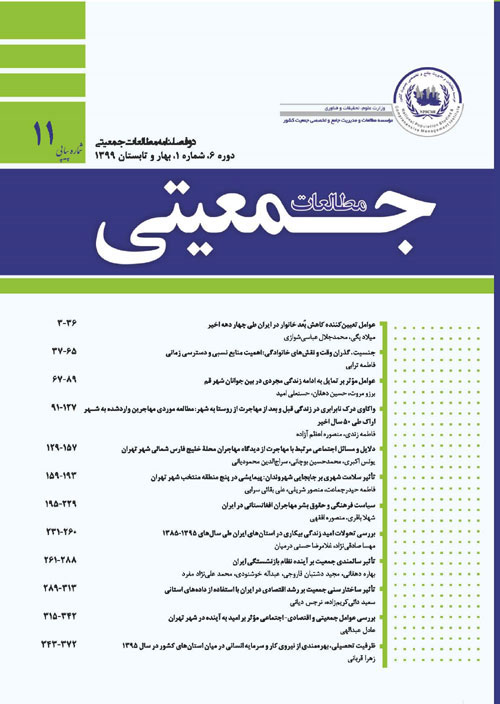Using Contraceptive Methods and Its Impact on Fertility Differential of Kurd and Turk Women Resident in Orumieh District
Author(s):
Article Type:
Research/Original Article (دارای رتبه معتبر)
Abstract:
This paper aims to study fertility differentials of Kurd and Turk women by considering the effects of using contraceptive methods and contextual determinants of fertility. This is based on a survey. The study population comprised ever-married women aged 15-49 resided in Orumieh district. The total sample size was 768 households. A combination of sampling techniques including multi-stage clustering and systematic random sampling were employed. Results showed a significant statistical difference in fertility between Kurd and Turk women. By controlling the contraceptive method use and socioeconomic and demographic characteristics, fertility differentials between ethnic groups remained significant. The results of this study showed inefficiency of the characteristics hypothesis to explain the differences in fertility of Kurd and Turk women. Based on these results, further studies with mix methods are suggested in order to understand the role and mechanism of the effects of ethnic and cultural characteristics on fertility in ethnically heterogeneous areas.
Keywords:
Language:
Persian
Published:
Iranian Population Studies Journal, Volume:1 Issue: 2, 2013
Pages:
67 to 88
magiran.com/p2003363
دانلود و مطالعه متن این مقاله با یکی از روشهای زیر امکان پذیر است:
اشتراک شخصی
با عضویت و پرداخت آنلاین حق اشتراک یکساله به مبلغ 1,390,000ريال میتوانید 70 عنوان مطلب دانلود کنید!
اشتراک سازمانی
به کتابخانه دانشگاه یا محل کار خود پیشنهاد کنید تا اشتراک سازمانی این پایگاه را برای دسترسی نامحدود همه کاربران به متن مطالب تهیه نمایند!
توجه!
- حق عضویت دریافتی صرف حمایت از نشریات عضو و نگهداری، تکمیل و توسعه مگیران میشود.
- پرداخت حق اشتراک و دانلود مقالات اجازه بازنشر آن در سایر رسانههای چاپی و دیجیتال را به کاربر نمیدهد.
In order to view content subscription is required
Personal subscription
Subscribe magiran.com for 70 € euros via PayPal and download 70 articles during a year.
Organization subscription
Please contact us to subscribe your university or library for unlimited access!



